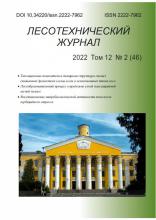Zvolen, Slovakia
Zvolen, Slovakia
The aim of the research was to modify urea-formaldehyde resin (UF) by cellulose sludge and wood bark in order to reduce formaldehyde emission. Wood bark powder was a mixture containing 50 % of beech bark and 50 % of spruce bark. Release of formaldehyde and shear strength of the adhesive joints was tested on five resp. three-layer alder plywood. Formaldehyde emission was determined by 24-hour desiccator method and monitored during seven weeks after gluing. After 7 weeks of the experiment the reference UF adhesive showed formaldehyde emission decreased by 39 %.
formaldehyde emission, hygienic properties, UF adhesive, furniture, plywood
1. Costa N.A., Ohlmeyer M., Ferra J., Magalhaes F.D., Mendes A., Carvalho L. The influence of scavengers on VOC emissions in particleboards made from pine and poplar. In European Journal of Wood and Wood Products 72, 2014, pp. 117-121. DOI: https://doi.org/10.1007/s00107-013-0761-9; EDN: https://elibrary.ru/CYHSXR
2. Dannemiller K.C., Murphy J.S., Dixon S.L., Pennell K.G., Suuberg E.M., Jacobs D.E., Sandel M. Formaldehyde concentrations in household air of asthma patients determined using colorimetric detector tubes. In Indoor Air 23, 2013, pp. 285-294.
3. EN 314-1: 2005. Plywood. Bonding quality. Part 1: Test methods.
4. EN 314-2: 1998. Plywood. Bonding quality. Part 2: Requirements.
5. EN 636: 2015 Plywood. Specifications.
6. Ghafari R., Doosthosseini K., Abdulkhani A.L., Mirshokraie S.A. Replacing formaldehyde by furfural in urea formaldehyde resin: effect on formaldehyde emission and physical-mechanical properties of particleboards. In European Journal of Wood and Wood Products 74, 2016, pp. 609-616. DOI: https://doi.org/10.1007/s00107-016-1005-6; EDN: https://elibrary.ru/INHJIY
7. JIS A 1460:2001. Building boards Determination of formaldehyde emission. Desiccator method.
8. Kim S., Kim J.A., An J.Y., Kim H.J., Kim S.D., Park J.CH. TVOC and formaldehyde emission behaviours from flooring materials bonded with environmental-friendly MF/PVAc hybrid resins. In Indoor Air. 17, 2007, pp. 404-415.
9. Khodosova N.A., Belchinskaya L.I., Petukhova G.A., Voishcheva O.V. Adsorption of formaldehyde from gaseous phase by thermally activated nanoporous celite. In Protection of metals and physical chemistry of surfaces 46(1), 2010, pp. 90-95. DOI: https://doi.org/10.1134/S2070205110010132; EDN: https://elibrary.ru/MXPLRB
10. Kučerová V., Výbohová E. Zmeny celulózy pri vodnej hydrolýze dreva Vŕby bielej (Salix alba L.). In Chemical Letters 108, 2014, pp. 1084-1089.
11. Park B.D., Lee S.M., Roh J.K. Effects of formaldehyde/urea mole ratio and melamine content on the hydrolytic stability of cured urea-melamine-formaldehyde resin. In European Journal of Wood and Wood Products 67, 2009, pp. 121-123. DOI: https://doi.org/10.1007/s00107-008-0277-x; EDN: https://elibrary.ru/XWTNFU
12. Sedliačik J., Matyašovský J., Šmidriaková M., Sedliačiková M., Jurkovič P. Application of collagen colloid from chrome shavings for innovative polycondensation adhesives In The Journal of the American Leather Chemists Association 106 (11), 2011, pp. 332-340.
13. Xing S., Riedl B., Deng J., Nadji H., Koubaa A. Potential of pulp and paper secondary sludge as coadhesive and formaldehyde scavenger for particleboard manufacturing. In European Journal of Wood and Wood Products 71, 2013, pp. 705-716.
14. Zhu X., Xu E., Lin R., Wang X., Gao Z. Decreasing the Formaldehyde Emission in Urea-Formaldehyde Using Modified Starch by Strongly Acid Process. In Journal of Applied Polymer Science 2014, 131.












